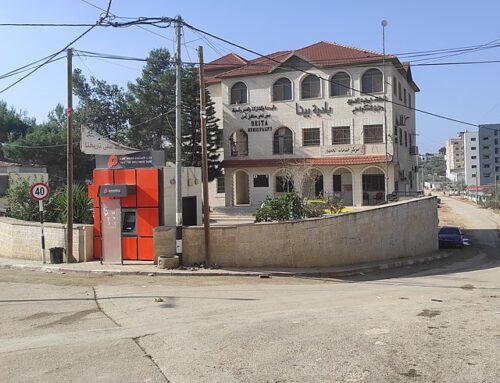Katyn, the most recent work of the great Polish filmmaker Andrzej Wajda and a finalist for the Best Foreign Language Oscar in 2008, was held over for nearly a month in its run at New York’s Film Forum, the city’s premiere art house. It depicts the Soviet murder of thousands of captive Polish army officers during the spring of 1940 and reverberations of the massacre’s aftermath several years later.
This mass crime is so obscured amidst even larger crimes that soon eclipsed it, that even the film and its promotional material vary in the number of victims cited: 12,000, 15,000, or 22,000.
Wajda was a protege of Aleksander Ford, a Polish Jew who headed Polish film productions in the immediate post-World War II period. Ford (who renamed himself in honor of the American film icon, John Ford) was obedient to the Communist regime’s propaganda needs – as he had to be, to make films at that time. It’s perhaps surprising that one of his efforts, Border Street, was strikingly “pro-Jewish” in its sympathetic depiction of the Jewish plight in the Warsaw Ghetto. It even focuses on the saintliness of a pious old Jew who perishes; but it also highlights the fighting spirit of younger Jews (including one child) who resist with weapons in hand.
Border Street’s production values, including battle scenes and plot lines, are extremely poor, undoubtedly reflecting both a limited budget and political requirements. Jews were visibly prominent in the new Communist state. Film as a propaganda tool would have preached the need for Jews and non-Jews in Poland to work together to build a new progressive order; it would emphasize that they faced a common Nazi foe during the war. Antisemitism is explicitly reviled in Border Street, whether exhibited by Nazis or by ordinary Poles.
Stalin, like Hitler (his ally from Sept. 1939 to June 1941), was a film buff who avidly screened films in private. Ford is reported to have been told in no uncertain terms by Stalin that Border Street was “too Jewish.” But it was not until 1968 that Ford was ousted from his job and from Poland during the anti-Jewish purge of that year. He lived in Israel, Denmark and the US afterwards, tried his hand at two films that were not successful, before taking his own life at a Florida hotel in 1980.
By contrast, Wajda has had a long and illustrious career creating films of artistic note even during the Communist era. This particular film, Katyn, was somewhat disjointed. Post-war segments introduced characters who were hard to place in the story, at least for this non-Polish speaker, and somewhat undercut its power.
What struck me as a Jewish film viewer is that there is nothing in Katyn, not even the dominant scenes of wartime and post-war Krakow, that indicates anything Jewish.
By this I do not argue that there’s anything anti-Jewish in it. Wajda has worked on several films in which Jewish characters have figured positively. But this work reflects what was a fact in war-time Poland: that the struggles of Catholic Poles and of Jews were of a completely different order. They suffered separately (especially after most Jews were ghettoized), even to the extent that Warsaw was the site of two totally separate anti-Nazi uprisings – the revolt of the Jews in the Warsaw Ghetto in the spring of 1943, and the general Polish rebellion in the summer of 1944.
Six million Polish citizens perished during World War II – three million Catholic Poles and three million Jews. The non-Jewish death toll was over ten percent of the population of Poland; the Jewish death toll was over 90 percent of Poland’s Jewish population.






Leave A Comment